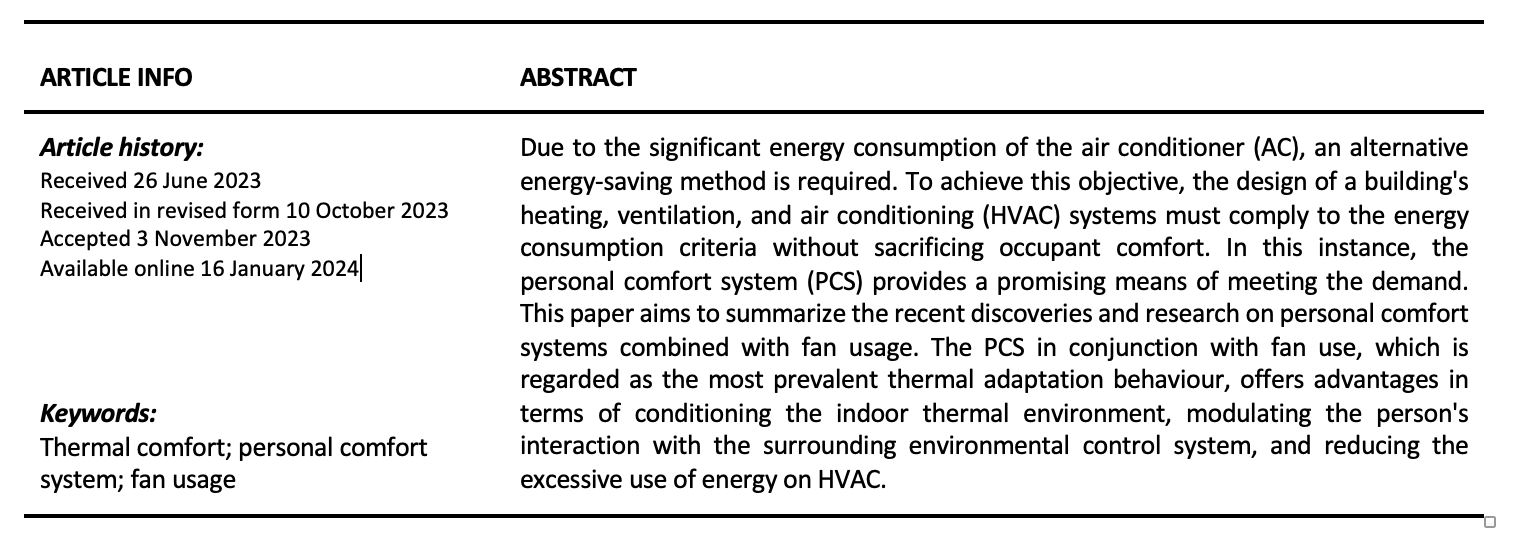Personal Comfort System Approach Associated with Fan Usage: A Review
DOI:
https://doi.org/10.37934/araset.37.2.1424Keywords:
Thermal comfort, personal comfort system, fan usageAbstract
Due to the significant energy consumption of the air conditioner (AC), an alternative energy-saving method is required. To achieve this objective, the design of a building's heating, ventilation, and air conditioning (HVAC) systems must comply to the energy consumption criteria without sacrificing occupant comfort. In this instance, the personal comfort system (PCS) provides a promising means of meeting the demand. This paper aims to summarize the recent discoveries and research on personal comfort systems combined with fan usage. The PCS in conjunction with fan use, which is regarded as the most prevalent thermal adaptation behaviour, offers advantages in terms of conditioning the indoor thermal environment, modulating the person's interaction with the surrounding environmental control system, and reducing the excessive use of energy on HVAC.




























